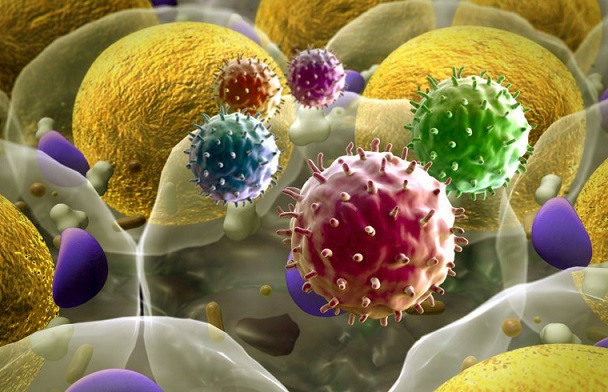Nikhil Prasad Fact checked by:Thailand Medical News Team Nov 26, 2025 39 minutes ago
Medical News: Fat Tissue Under New Suspicion In COVID-19 Complications
A groundbreaking scientific review by experts from Cork University Hospital, University College Cork, APC Microbiome Ireland, and the Hospital for Sick Children at the University of Toronto is revealing a startling new picture of how SARS-CoV-2 behaves inside the human body. Their findings show that adipose tissue may not only attract the virus but could also help drive inflammation, metabolic disruption, and long-lasting symptoms. As outlined in this
Medical News report, the researchers revisited earlier warnings from 2020 and found that new studies strongly support the theory that fat tissue plays an active role in worsening COVID-19 outcomes, especially for people living with obesity.
 New research warns that fat tissue may act as a viral reservoir driving long COVID
Virus Found Deep Inside Human Fat Cells
New research warns that fat tissue may act as a viral reservoir driving long COVID
Virus Found Deep Inside Human Fat Cells
Autopsy studies from several global teams confirmed that SARS-CoV-2 genetic material is present in both subcutaneous and visceral fat, with visceral fat showing a much higher viral load. Laboratory experiments using freshly collected human adipocytes revealed that viral RNA and sub-genomic transcripts appear within 24 hours of infection, suggesting early replication steps occur inside fat cells. While no study has yet recovered fully infectious virus from adipose tissue, the consistent detection of viral RNA and viral proteins shows that SARS-CoV-2 reaches this tissue and interacts with it in biologically important ways.
Fat Tissue Amplifies Inflammation and Alters Metabolism
The scientists found that infected adipose tissue triggers a powerful immune response, drawing macrophages into the area and increasing cytokine release. This leads to cell death, tissue remodeling, fibrosis, and heightened oxidative stress. Infected adipocytes also shift toward producing inflammatory molecules such as IL-6 while decreasing essential metabolic hormones like leptin. In animal studies, SARS-CoV-2 infection caused insulin resistance, impaired glucose regulation and delayed recovery, suggesting that disruptions within fat tissue can spill over into the entire body and contribute to long COVID symptoms.
Could Fat Tissue Be a Long-Term Viral Hideout?
The review highlights a worrying pattern seen in human samples where viral RNA remains in adipose tissue weeks after infection. Although true viral persistence requires confirmation of infectious virus, the long-lasting presence of viral material combined with metabolic abnormalities suggests fat tissue could function as a temporary or extended viral reservoir.
Conclusion
All available evidence now shows that fat tissue is a dynamic biological site affected by SARS-CoV-2, influencing inflammation, immune activity and long-term metabolic health. While full viral replication in vivo has not yet been proven, the accumulating data explain why obesity creates higher risks and why adipose tissue must become a major focus in future pandemic preparedness and long COVID research.
T
he study findings were published in the peer reviewed journal: Obesity
https://onlinelibrary.wiley.com/doi/10.1002/oby.70093
For the latest on Long COVID, keep on logging to Thailand
Medical News.
Read Also:
https://www.thailandmedical.news/articles/long-covid
https://www.thailandmedical.news/articles/coronavirus
